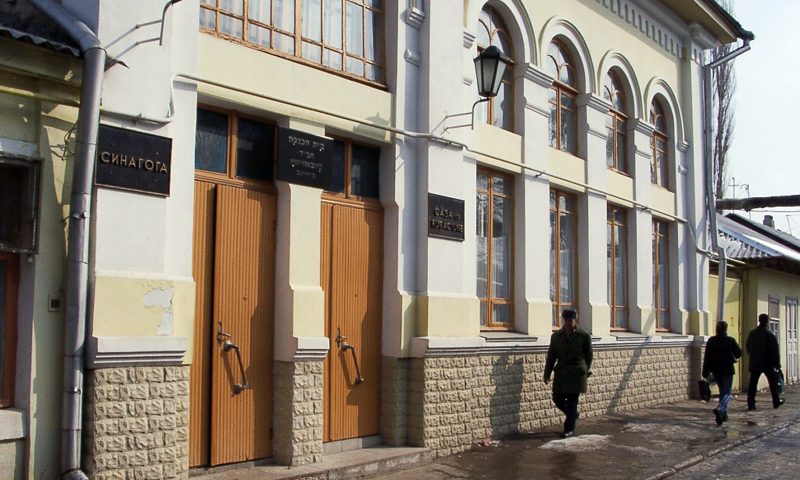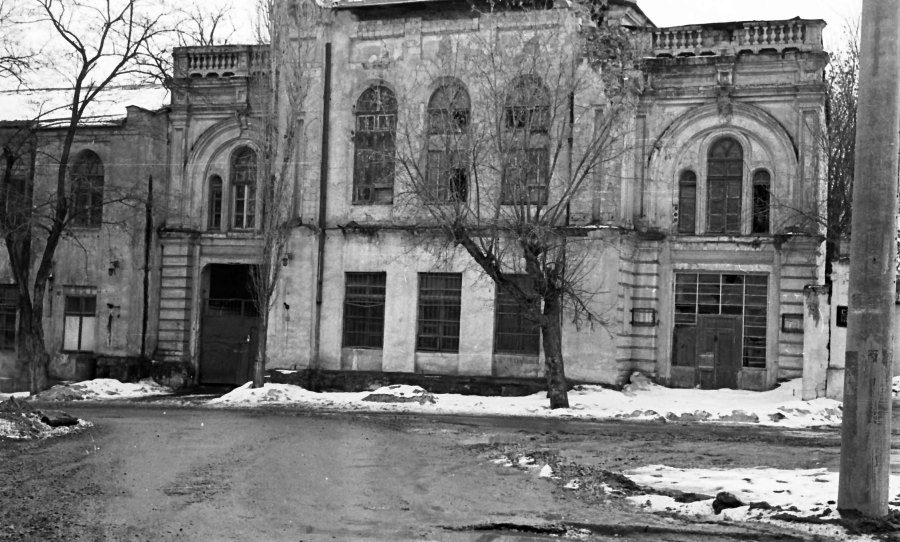The Hay Synagogue, as a prayer house, is on the lists even before 1850. In 1886, it was built and received the status of a synagogue. The synagogue was built in stone and covered with a metal roof. A large courtyard adjoined the building. In 1939, three synagogues at once were being built in the courtyard. A yeshiva worked at the synagogue. The neighboring territories belonged to Jewish families, which could contribute to the expansion of the synagogue space. By 1940, the synagogue building and all the facilities inside the courtyard were in very good condition. In 1940 it was confiscated by the Soviet authorities. In 1941, the Gestapo was located in the buildings and cellars. After 1944, there was an employment office here. In 1991, the building of the synagogue was transferred to Agudath Israel and became one of the most vibrant and active Jewish centers of the city.
The synagogue building was returned 50 years after it was confiscated by the Soviet authorities. Many remembered the building of the Gestapo located here during the war and the executions that took place near this territory. In addition, local residents who lived in the yards next to the synagogue were known for betraying Jews, who were hiding in numerous cellars, to the Germans and Romanians. In the 1990s the synagogue began its active work. The focus at that time was made on children and youth. Yeshivas were opened for boys and girls.
The synagogue of glaziers and bookbinders was built in 1886. This is the only synagogue in Chisinau and Moldova that was not closed during the Soviet era. In 1990, it became the Chabad Lubavitch Synagogue.
Until 1886 it was considered a prayer house, in 1900 it was rebuilt in stone and covered with tiles. The owners of the synagogue were the Finkelstein and Koshman families. During the war years, the synagogue was located near the border of the ghetto. With the advent of Soviet power in 1940, the building was not damaged. The Romanians seized and closed the synagogue, but did nothing with the premises. The building was badly damaged during the bombing of Chisinau. It was completely restored by the members of the Jewish community and put into operation in 1946.
At the beginning of the 20th century (1902), two of the richest members of the Jewish community, Shulim Perelmuter and Moses Kligman, received permission to build a nursing home and a yeshiva for boys. A synagogue was built between these two premises. In practice, a Jewish center was created, consisting of three objects. An outstanding religious and public figure, Chief Rabbi of Chisinau, Rabbi Yehuda-Leib Tsirelson, taught at the yeshiva. He also became chair of the Nursing Home board. Chisinau residents named the synagogue and the entire charitable complex “Tsirelson’s Synagogue”.
The founders and main sponsors of the nursing home, synagogue and yeshiva, the Perelmuter and Kligman families, were very wealthy people and distinguished by many charitable actions. Moses Kligman was the son-in-law of Shulim Perelmuter.


